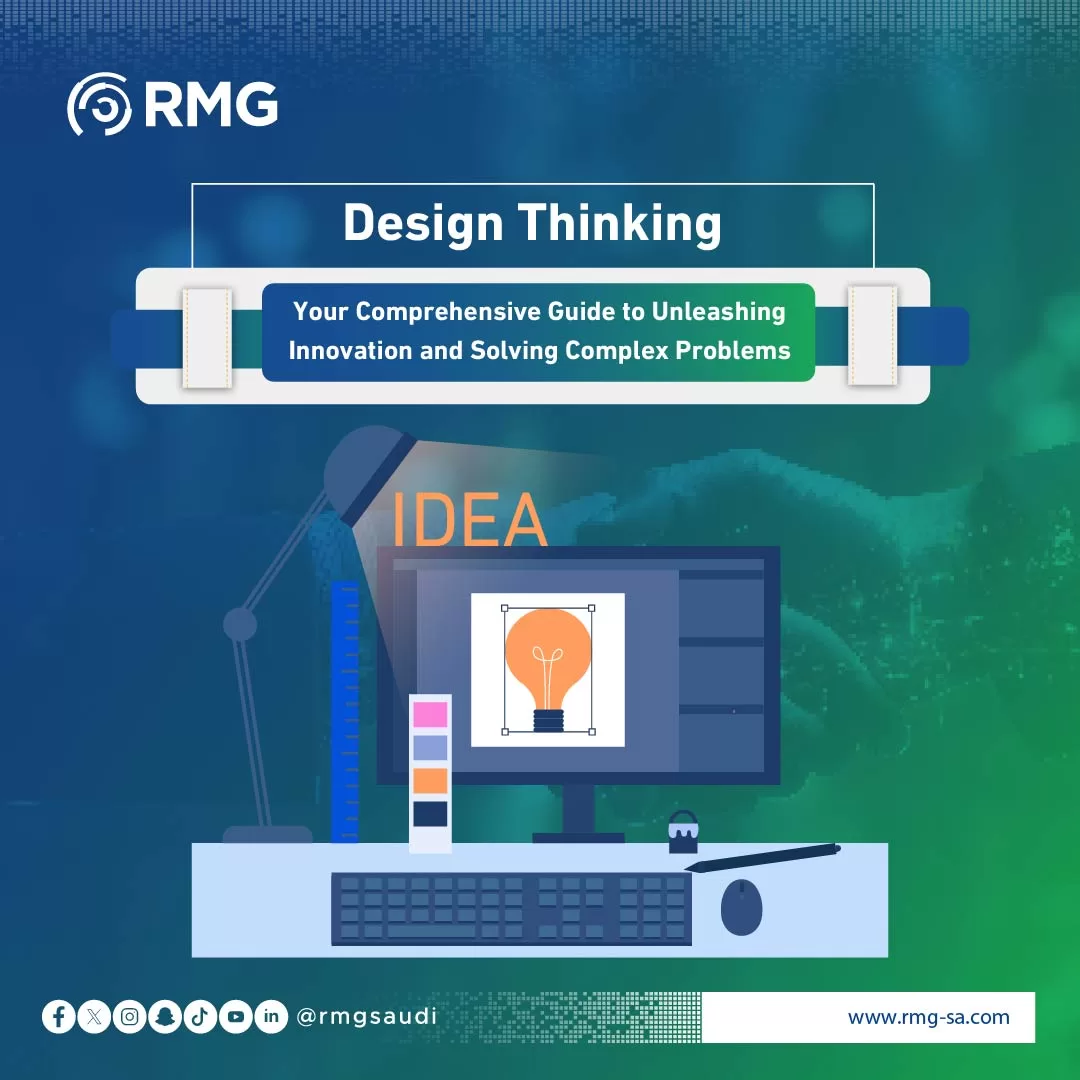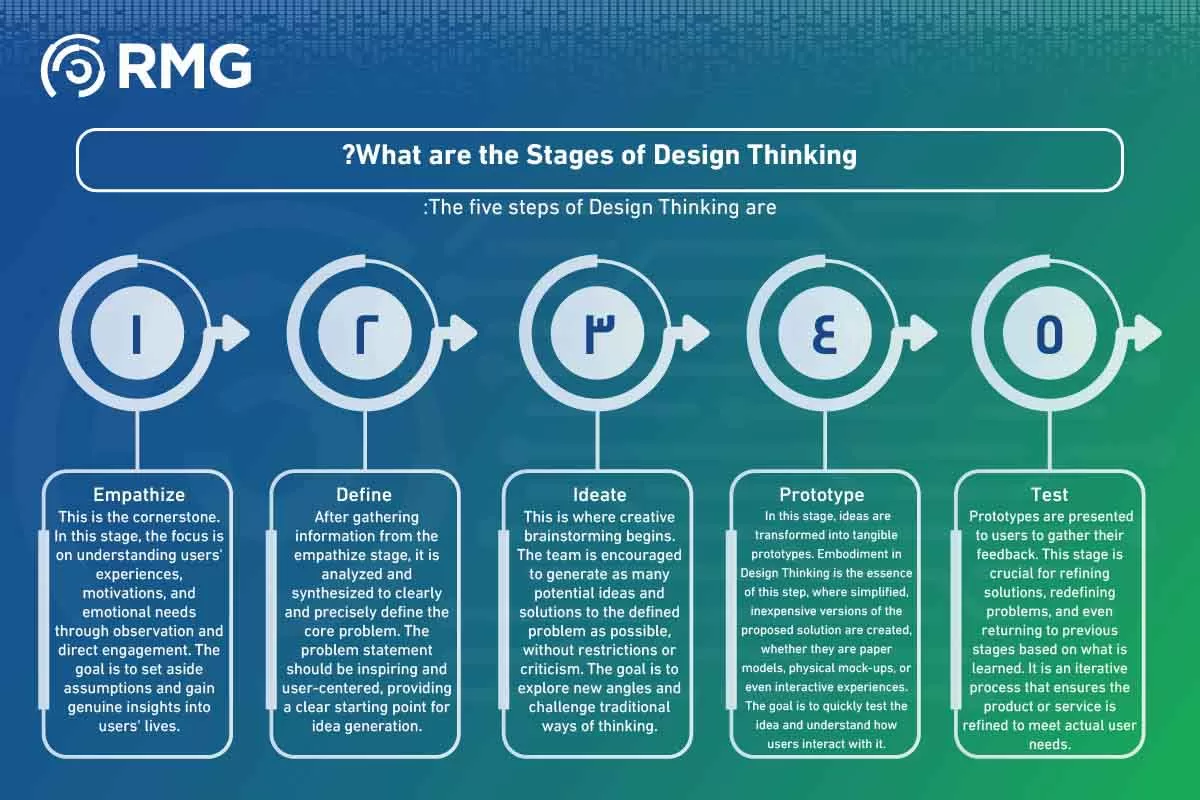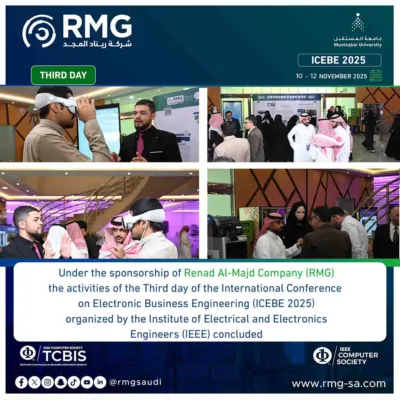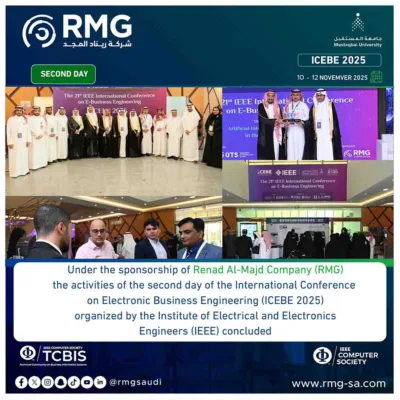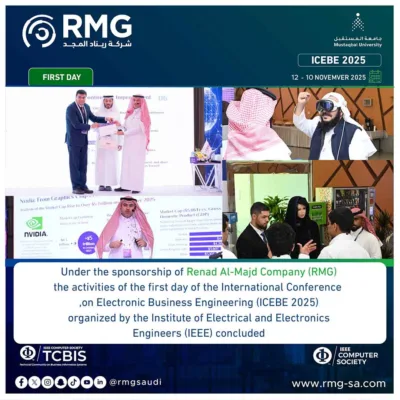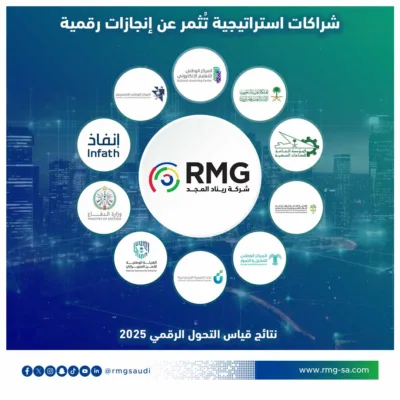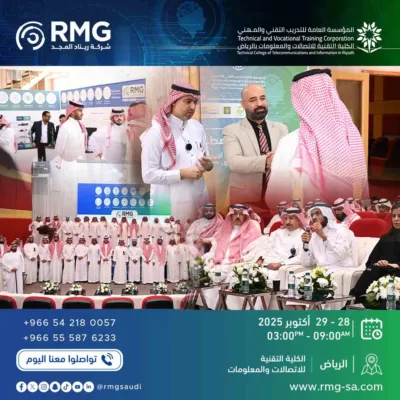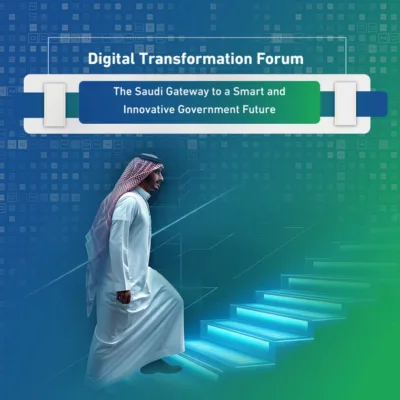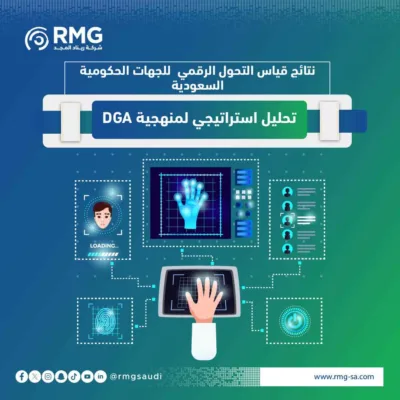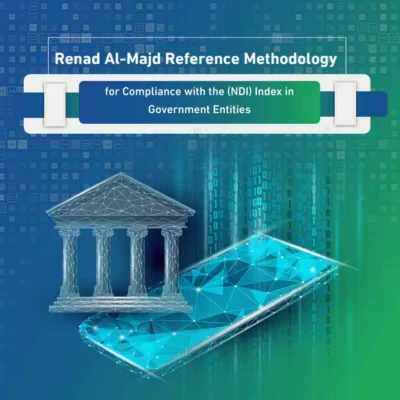Blog Body
Discover the power of Design Thinking, a human-centered methodology for problem-solving and fostering innovation. Learn about its stages, benefits, and how Renad Al Majd Company can lead you toward excellence.
In a world where change is accelerating and challenges are becoming increasingly complex, traditional solutions are no longer sufficient to keep pace with market demands and user needs. This is where Design Thinking emerges as a revolutionary methodology that is not limited to designers but has become an essential strategic tool for leaders, entrepreneurs, and organizations striving for sustainable growth and true innovation. This article is your gateway to understanding this powerful mindset and learning how to apply it to transform challenges into opportunities for success.
What is Design Thinking? A Human-Centered Methodology
Design Thinking is a problem-solving approach that primarily focuses on humans and their needs. It’s an iterative process that seeks to understand users, challenge assumptions, and redefine problems to identify alternative strategies and solutions that may not be immediately obvious. Instead of starting with a technical solution, the Design Thinking model begins with deep empathy for the target audience, ensuring that the final solutions are desirable by users, technically feasible, and economically viable. It is the bridge that connects people’s needs with technological possibilities and the requirements for business success.
The Five Stages of Design Thinking: A Journey from Understanding to Solution
The Design Thinking process consists of five main stages, which are not necessarily strictly linear; rather, one can move between them flexibly to ensure the best results.
What are the Stages of Design Thinking?
The five steps of Design Thinking are:
- Empathize: This is the cornerstone. In this stage, the focus is on understanding users’ experiences, motivations, and emotional needs through observation and direct engagement. The goal is to set aside assumptions and gain genuine insights into users’ lives.
- Define: After gathering information from the empathize stage, it is analyzed and synthesized to clearly and precisely define the core problem. The problem statement should be inspiring and user-centered, providing a clear starting point for idea generation.
- Ideate: This is where creative brainstorming begins. The team is encouraged to generate as many potential ideas and solutions to the defined problem as possible, without restrictions or criticism. The goal is to explore new angles and challenge traditional ways of thinking.
- Prototype: In this stage, ideas are transformed into tangible prototypes. Embodiment in Design Thinking is the essence of this step, where simplified, inexpensive versions of the proposed solution are created, whether they are paper models, physical mock-ups, or even interactive experiences. The goal is to quickly test the idea and understand how users interact with it.
- Test: Prototypes are presented to users to gather their feedback. This stage is crucial for refining solutions, redefining problems, and even returning to previous stages based on what is learned. It is an iterative process that ensures the product or service is refined to meet actual user needs.
Benefits of Design Thinking: Why Leading Companies Adopt It
Adopting this methodology brings immense strategic benefits to organizations. Among the most prominent benefits of Design Thinking are:
- Reduced Risk of Failure: By testing ideas with low-cost prototypes, their flaws can be identified early before investing significant resources.
- Increased Customer Satisfaction: Solutions designed based on a deep understanding of customer needs are more likely to be accepted and foster loyalty.
- Enhanced Innovation Culture: It encourages teams to experiment and learn from mistakes, creating a dynamic and creative work environment.
- Solving Complex Problems: It provides a structured framework for dealing with ambiguous challenges that do not have clear solutions.
Design Thinking and Innovation: An Inseparable Duo
The relationship between Design Thinking and innovation is complementary. Design Thinking aims not only to improve what already exists but also to discover unmet needs and create entirely new solutions. By focusing on humans, it opens the door to radical innovations that change the rules of the game in the market, as it ensures that innovation is purposeful and solves a real problem for a real person.
Design Thinking Skills: How to Become a Design Thinker?
To effectively apply this methodology, a set of essential skills needs to be developed. Among the most important Design Thinking skills are:
- Empathy and Curiosity: The ability to understand others’ perspectives and ask the right questions.
- Critical and Analytical Thinking: The ability to analyze data, identify patterns, and pinpoint core problems.
- Creativity and Idea Generation: Thinking outside the box and envisioning unconventional solutions.
- Collaboration and Communication: Working effectively within multidisciplinary teams.
- Love for Experimentation and Learning: Not fearing failure and viewing it as an opportunity for learning and improvement.
Practical Applications: Where is Design Thinking Used?
The applications of Design Thinking extend beyond product design to include multiple sectors:
- In Education: It is used to develop more engaging curricula, improve the learning environment, and empower students to solve problems creatively.
- Using Design Thinking in Feasibility Studies: Instead of relying solely on numbers, it helps to understand the feasibility of an idea from the user’s perspective, adding a vital human dimension to traditional feasibility studies.
- Design Thinking for Initiatives: It is used in designing community initiatives and government programs to ensure they achieve maximum impact and effectively meet the needs of target groups.
Your Tools for Success: The Design Thinking Kit and Course
To embark on your journey, you can utilize a set of tools. A Design Thinking kit usually contains ready-made templates, brainstorming tools, and customer journey maps that help organize the process. However, for a deeper understanding and professional application, a specialized Design Thinking course is an invaluable investment, as it provides practical guidance and direct application to real challenges.
Renad Al Majd Company’s Role in Activating Design Thinking
At Renad Al Majd Information Technology Company (RMG), we believe that Design Thinking is not just a process, but a complete work culture. We don’t just provide consultations; we act as a strategic partner to empower organizations to adopt this methodology at the core of their operations. Our role involves training teams, facilitating workshops, and leading innovative projects from initial idea to successful implementation, ensuring tangible and sustainable results.
Why Choose Renad Al Majd as Your Innovation Partner?
Choosing “Renad Al Majd” means choosing expertise and excellence. Why Renad Al Majd?
- Practical Experience: Our team has extensive experience in applying elements of Design Thinking to diverse projects in both the government and private sectors.
- Customized Methodology: We don’t apply a one-size-fits-all model; instead, we design our programs and workshops to meet the unique needs of each organization.
- Focus on Results: Our goal is not just to generate ideas, but to transform them into implementable solutions that achieve a return on investment.
- Knowledge Transfer: We strive to empower our clients’ teams to become innovation leaders within their organizations.
An Invitation to Excellence: Join Future Leaders with Renad Al Majd
Adopting Design Thinking is an investment in the future. We extend an invitation to government entities, private companies, and non-profit organizations that aspire to achieve excellence and leadership to collaborate with Renad Al Majd Company. Let us help you build your innovative capabilities, design exceptional services and experiences for your customers, and transform challenges into your greatest opportunities for growth.
Contact us today to start your journey towards a future centered on human-centric innovation.














